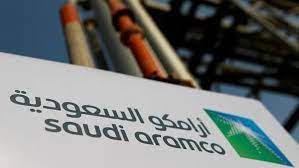RIYADH (Reuters): Saudi Aramco on Tuesday said it was asked to cut its planned maximum sustainable oil production capacity to 12 million barrels a day (bpd), having raised it to 13 million bpd almost four years ago.
The move in no way reflects a change of views on future oil demand scenarios, a source with direct knowledge of the matter told Reuters.
The change also was not a result of technical issues, but a directive from the government, the source added.
“If the government decides to go the other way, the company is ready,” the source said.
Brent crude futures were little changed, up about 0.2% to $82.52 per barrel as of 0732 GMT.
Aramco was asked by the Energy Ministry in March 2020 to boost its maximum output capacity to 13 million bpd amid a stand-off with Russia over market share. On Tuesday, the ministry asked Aramco to return to its previous target of 12 million bpd.
After flooding the markets with cheap oil, Riyadh and Moscow in May 2020 resumed cooperation on production levels through the Organization of the Petroleum Exporting Countries and its allies led by Russia, collectively known as OPEC+. This group continues to coordinate output.
Spare capacity functions as the world’s emergency oil stock yet only a handful of producers – mainly de facto OPEC leader Saudi Arabia and the United Arab Emirates – have any meaningful spare capacity.
That gives them room to adjust output depending on market needs.
“Aramco currently has spare capacity of 3 mbpd and that will be supported in the near future by a very important liquids displacement programme which will avail another 1 million bpd of oil and refined products for production,” the source with knowledge of the matter said
Riyadh and Abu Dhabi have repeatedly called for more investment in oil and gas and argue fossil fuels will be part of the energy mix for decades to come.
Yet major consumers, including the United States and the European Union, have adopted policies aimed at transitioning away from fossil fuels to cleaner energy which has discouraged such investment.







